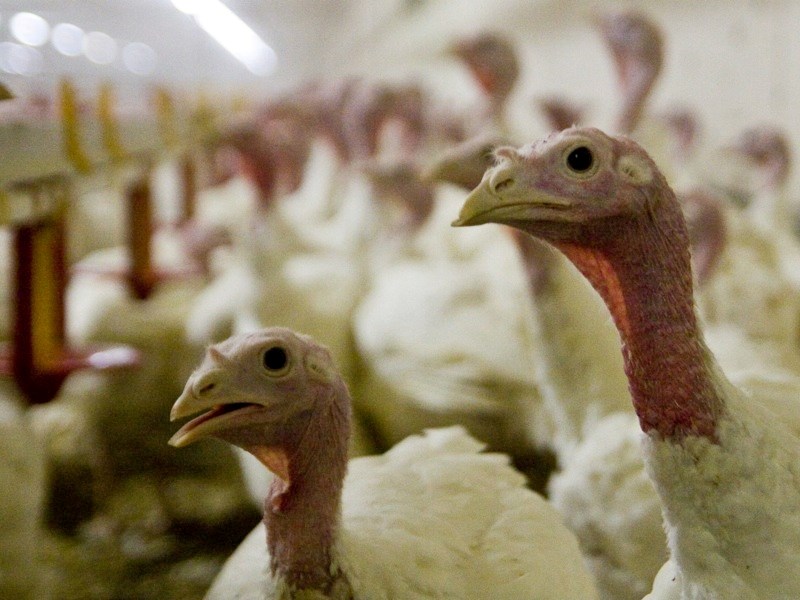Their 18-week adventure to your table starts with conception.
A short romance between a “Tom,” male turkey, and hen, produces an egg at the Lilydale hatchery in Edmonton. Once laid, the egg sits at the facility to incubate for 28 days, a mere shadow of the birds they will eventually become.
Once hatched, the birds are known as poults, the turkey version of a chicken’s chick. The day old poults are quickly whisked off to their new home, one of 48 farms in Alberta registered with the province’s turkey producers association.
In Athabasca County, Polak Farms is the destination.
The patriarch of the family, Victor Polak, has been in the business for over 50 years.
In the early days, he explains, his mother was convinced by the local hatchery owner to bring home some young turkeys to compliment the chickens she was buying.
Starting with only 50 birds, business has boomed in that half-century.
“Cattle weren’t doing so hot, neither were the pigs,” he says at his home near Rochester. “The next year we had 100 turkeys, then it just continued to expand from there.”
Now they raise over 200,000 birds annually, operating with a few employees and multiple buildings that house turkeys at different stages of development.
The short trip for the day-old poults ends at Polak Farms, where they are unloaded into one of three “growing barns”.
The baby birds are fed and housed for the next 14 weeks, each one going from less than a pound to an average of 8.5 kilograms, the perfect size for a family’s holiday feast.
Once finished, the 12,000-strong rafter of birds will head back from whence they came, Lilydale’s operation in the province’s capital, where they will come under the purview of the company’s Vice President of Turkey Operations, Dan Graham.
Like Polak, Graham’s poultry roots run deep. After finishing his degree in 1981, he got his start in the business and has spent more than three-quarters of the last three decades dealing with birds.
The company has been in the poultry business for over 65 years.
Roughly half of Lilydale’s turkey business is their whole bird operation, with the other half going to the further processed products, like sliced meat for sandwiches. The operation represents a majority of the 17 million kilograms of whole turkeys sold in the province annually.
“We have basically three seasons for whole birds,” he says. “Easter, Thanksgiving and Christmas.”
The rest of the year, he explains, the demand for whole birds is low.
Fresh off the farm, the birds’ time spent alive at the facility is short.
Working under the eyes of a federal inspector, workers render the birds unconscious, quickly slitting their throats for a quick death.
The birds have the feathered and inedible parts removed. Those parts, such as the innards, go on for further processing to make products like protein meal and tallow.
After removal of those parts, the birds look similar to how they appear on grocery store shelves, but the process isn’t over.
They are bagged and quickly chilled, either by blasting them with cold air or dipping them in a sub zero brine solution, Graham explains.
From there it is on to one of two fates; fresh or frozen.
“By far the majority are frozen,” he says, adding that they would not be able to keep up with demand without freezing and storing birds for the peak periods.
Seeming to come full circle, the prepared birds are once again whisked away to their destinations; grocery store shelves across the Western provinces.
Traveling across the province, the birds have spent 18 weeks getting ready for their moment to shine as the star of the table of roughly one million Albertan families this holiday season.
But don’t rule out turkey for the rest of the year, says Greg Smith, executive director of the Alberta Turkey Producers.
“We’d prefer (if) people would eat turkeys year round,” he laughs. “But the real gist is that it is our festive season and we’re proud to provide top quality products for our families.”



